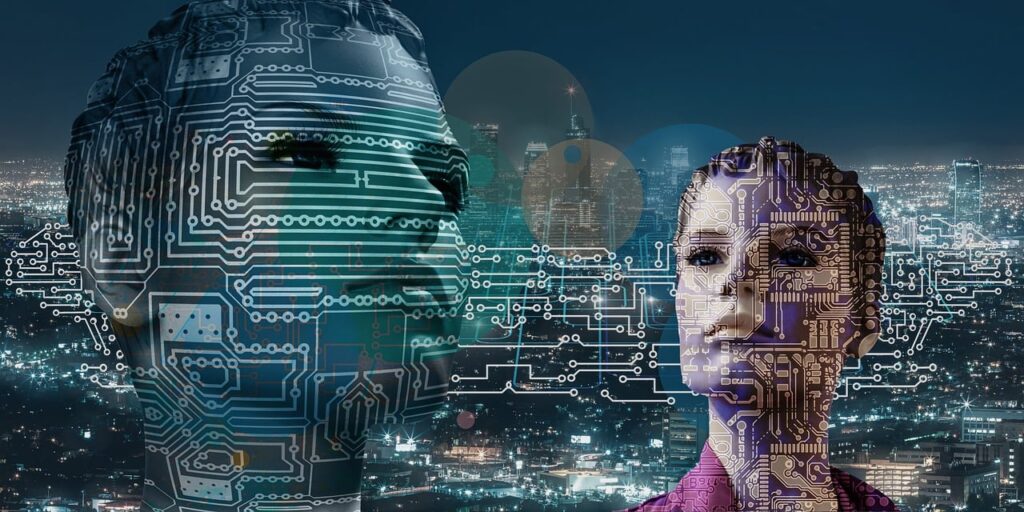
Introduction to Generative AI
Generative AI, a subset of Artificial Intelligence (AI), has emerged as a fascinating field with the potential to revolutionize various industries. It empowers machines to create new and original content autonomously, ranging from images and music to text and virtual worlds. As a beginner, understanding Generative AI and its underlying concepts can seem daunting. However, this beginner's guide aims to demystify Generative AI, providing you with the necessary knowledge to explore this exciting realm of artificial creativity.
Understanding the Basics of Generative AI
To comprehend Generative AI, it is essential to grasp the fundamentals of AI itself. AI refers to the simulation of human intelligence in machines, enabling them to perform tasks that typically require human intelligence. Generative AI specifically focuses on the capability of machines to generate new content based on patterns and data.
Generative AI utilizes advanced technologies and algorithms, primarily rooted in machine learning and deep learning. Machine learning enables machines to learn from data, while deep learning focuses on training neural networks with multiple layers to extract intricate patterns and generate outputs. Generative AI builds upon these foundations, employing various models and techniques to create novel content.
Generative AI Applications and Use Cases
Generative AI finds applications in numerous domains, presenting exciting possibilities across industries. In the field of art and design, Generative AI can aid in the creation of unique and visually stunning pieces. It has also made significant strides in music generation, where AI algorithms compose melodies and harmonies. Additionally, Generative AI plays a vital role in virtual reality, gaming, fashion, content generation, and healthcare, among others.
The impact of Generative AI is far-reaching. It fosters innovation, enabling breakthroughs that were previously unattainable. By automating creative processes, it frees up human talent and allows for the exploration of new ideas. Generative AI also facilitates personalization and customization, enhancing user experiences and driving engagement.
Key Components of Generative AI
Generative AI systems consist of essential components that drive their functionality. Neural networks, inspired by the structure of the human brain, serve as the foundation. They are composed of interconnected nodes, or artificial neurons, that process and transmit information. Deep learning algorithms leverage neural networks to learn patterns and generate outputs based on vast amounts of data.
Data plays a crucial role in Generative AI models. These models are trained on extensive datasets, allowing them to understand and emulate patterns and characteristics present in the training data. The quality and diversity of the data greatly influence the performance and creativity of Generative AI models.
Types of Generative AI Models
Generative AI encompasses various types of models, each with its unique characteristics and applications. One widely used model is the Variational Autoencoder (VAE). VAEs are capable of learning and generating new data by encoding and decoding input information. They are particularly effective in tasks such as image and text generation.
Generative Adversarial Networks (GANs) represent another prominent class of Generative AI models. GANs consist of two components: a generator and a discriminator. The generator generates new content, while the discriminator evaluates its authenticity. This interplay between the two components leads to the continuous improvement of generated outputs.
Recurrent Neural Networks (RNNs) are also utilized in Generative AI. RNNs are adept at processing sequential data, making them suitable for tasks such as language modeling and music generation.
Ethical Considerations in Generative AI
As Generative AI continues to advance, it is crucial to address ethical considerations. The autonomous generation of content raises concerns related to privacy, bias, and the preservation of human creativity. Generative AI can potentially amplify existing biases present in the training data, necessitating careful analysis and mitigation strategies.
Responsible and ethical use of Generative AI involves ensuring transparency, fairness, and accountability. Organizations and researchers must actively consider the implications of their creations and take steps to minimize potential harm.
Getting Started with Generative AI
For beginners interested in exploring Generative AI, there are several resources and tools available. Python, a widely used programming language, offers numerous libraries and frameworks, such as TensorFlow and PyTorch, which facilitate the implementation of Generative AI models. Online courses, tutorials, and forums provide valuable learning materials to kickstart your journey.
By immersing yourself in practical projects and experimenting with Generative AI models, you can gain hands-on experience and develop a deeper understanding of its intricacies.
Future Trends and Possibilities in Generative AI
The future of Generative AI is brimming with exciting possibilities. Ongoing advancements in technology and research continue to push the boundaries of creativity and innovation. As Generative AI matures, we can expect to witness its integration into various industries, transforming the way we interact with technology and fostering new avenues of expression.
Whether it's the fusion of Generative AI with virtual reality, advancements in human-AI collaboration, or breakthroughs in content generation, the future promises a dynamic and ever-evolving landscape of possibilities.
Conclusion
Generative AI represents a groundbreaking field that combines the realms of technology and creativity. By demystifying the key concepts and applications of Generative AI, this beginner's guide has provided you with a solid foundation to embark on your journey into this fascinating domain. As you delve deeper, remember to embrace ethical considerations and explore the vast array of resources available to further enhance your understanding and skills.
FAQs (Frequently Asked Questions)
- What is the difference between Generative AI and Traditional AI?
- Generative AI focuses on the creation of new content, while traditional AI involves the replication of existing patterns or decision-making based on predefined rules.
- Can Generative AI models be used for real-time applications?
- Yes, depending on the complexity of the model and the available computational resources, Generative AI models can be deployed for real-time applications.
- Are there any limitations or challenges in Generative AI?
- Generative AI faces challenges related to data quality, bias, and the need for significant computational resources. Ethical considerations surrounding the impact of Generative AI on society also need to be addressed.
- How can Generative AI contribute to the field of art and creativity?
- Generative AI can inspire and aid artists by generating novel ideas, assisting in the creation of visual and auditory content, and exploring new artistic possibilities.
- What are some notable examples of successful Generative AI projects?
- Some notable examples include DeepArt, which transforms images into artistic masterpieces, and OpenAI's GPT-3, a language model capable of generating coherent and contextually relevant text.

2 thoughts on “Demystifying Generative AI: A Beginner’s Guide”